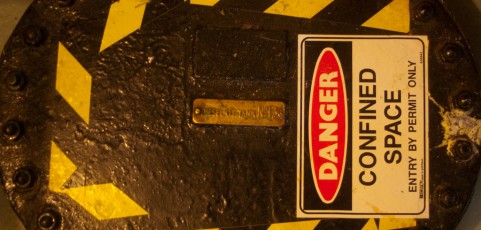Offering some of the most dangerous situations in the oil and gas industry, confined spaces have been responsible for numerous accidents over the years. However, by properly monitoring these areas for dangerous levels of gas, workers can be much better protected. But to ensure worker safety is at the highest possible levels, oil and gas companies should strictly follow OSHA requirements for confined spaces. To ensure your company is following these requirements, here are some of the most important points when it comes to OSHA confined space monitoring.
What is a Confined Space?
To properly understand the requirements for gas detectors in confined spaces, it’s vital to have a thorough grasp of what OSHA defines as a confined space. According to OSHA, a confined space has limited means for access, is not intended for continuous employee occupancy, and has an adequate size and configuration necessary for employee entry. If an area meets these requirements, then confined space gas monitors can be used to measure for dangerous levels of various gases including hydrogen and methane.
Using a Confined Space Monitor
While a confined space must meet the above definition, there are other confined spaces that are even more hazardous to workers. Referred to as Permit-Required Confined Spaces, they not only meet the standard definition of confined spaces, but also meet other criteria as well. These can include having the potential to contain a hazardous atmosphere, containing material with the potential to engulf the entrant, and having a configuration which may result in the occupant becoming trapped or asphyxiated.
Atmospheric Testing
According to OSHA standards, atmospheric testing of confined spaces must be done using confined space air monitoring equipment as well as confined space air testing equipment. Before any employee enters a confined space, the internal atmosphere must be tested using a properly calibrated instrument. Using the instrument, the atmosphere must be tested for oxygen content, flammable gases and vapors, and potential toxic air contaminants. In addition to this, OSHA states that there must be no hazardous atmosphere within the confined space whenever an employee is inside, emphasizing the premium put on employee safety.
Multi-Gas Monitors
To perform atmospheric testing within confined spaces, multi-gas monitors must be part of the equation not only before an employee enters the space, but also the entire time the space is occupied. If at any time gas levels are found to be hazardous, OSHA rules state that continuous forced air ventilation must be used, and that no employees may reenter the space until the hazardous conditions have been eliminated using the forced air ventilation. In addition, the air supply for the forced air ventilation must come from a clean source that will not increase the current hazardous atmosphere, nor create a new hazard for employees.
By having an awareness of these important OSHA regulations involving gas detectors in confined spaces, companies can be much more aware of how to keep their employees safe, which will ultimately lead to workplace conditions that will improve year after year.

